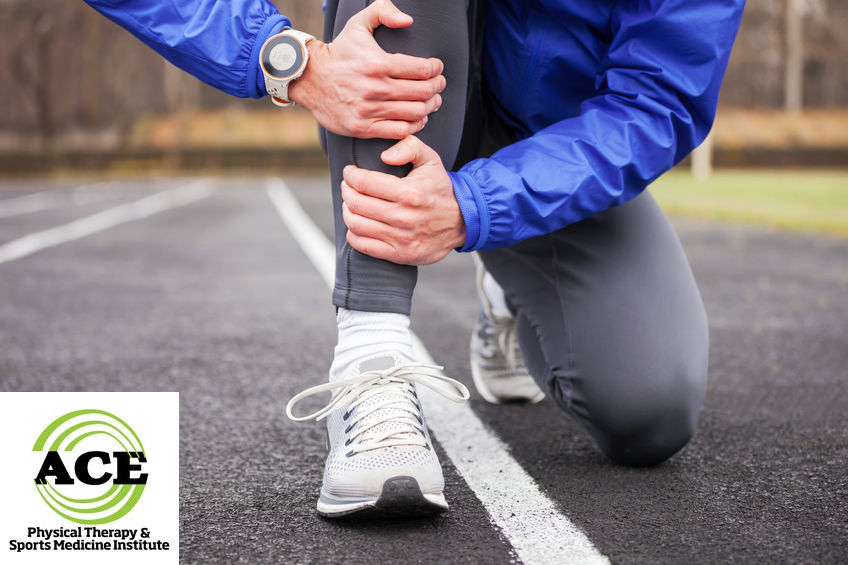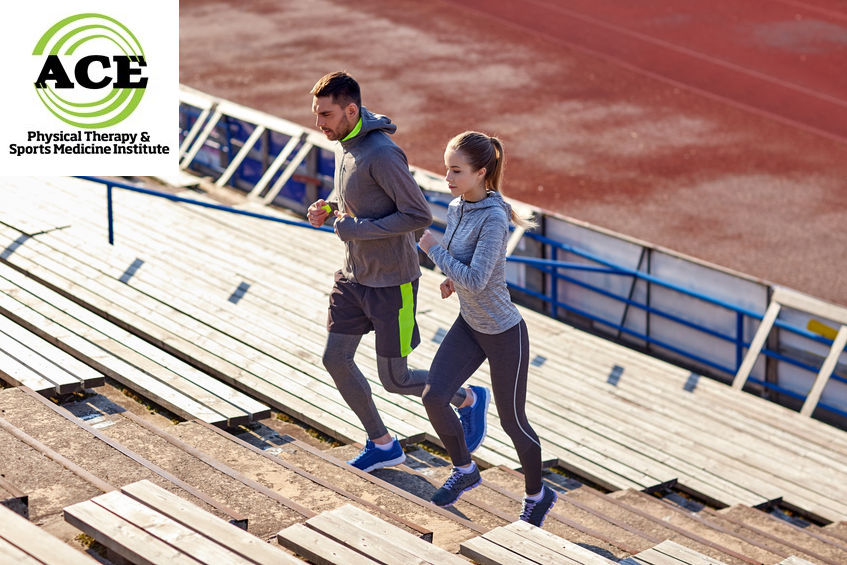SHIN SPLINTS: WHAT ARE THEY?

Tid Bits of Info
- Shin splints are treated more than 3 million times per year in the U.S.
- Shin splints are an inflammation of the muscle, tendon and/or bone covering.
- Shin splints are often associated with “flat” feet.
- Shin splints can occur on either side (medial or lateral) of the shin bone.
- Seek the advice and treatment from a Physical Therapist if you develop shin pain
Many people experience shin pain for various reasons: the most common is shin splints. These result from overworking the muscles along the shin bone due to repetitive activity and can be intense and sharp. The pain often limits physical activity due to the amount of discomfort that occurs. At their worst, shin splints can cause so much discomfort that regular physical activities must be dramatically reduced. Physical Therapists can teach patients how to prevent shin splints and how to minimize and resolve the symptoms quickly.
Shin splints occur when the muscle, tendon and/or bone are inflamed due to over-use. This is a common exercise-related injury that affects all age groups. The onset of symptoms is usually tied to an increase in weight-bearing activity. People who begin a jogging program or others that start to walk extensively for exercise or work can develop shin splints. The muscles in the shin that attach to the Tibia (shin bone) can become inflamed. The muscle connects to the bone via tendon tissue and the bone is covered with periosteum. Any or all of these structures can become inflamed and cause pain.
The most common cause is a change in the frequency or intensity of weight-bearing activities. Some other causes include “flat” feet and excessive weight bearing in poorly fitted shoes or worn out shoes. The anatomy of the feet can lead to a “collapse” of the medial arch which in turn causes the foot to become “flat” when the person stands on that foot. The muscles of the shin help to control the arches of the feet during weight-bearing activity. When the foot collapses, the muscles have to work “over-time” to control the arch or help to move it from the “collapsed” position to a favorable position that enables propulsion of the body to take the next step. Proper shoe wear is important. Medial arch support can help to control the arch and reduce the “work-load” that is thrust upon the shin musculature. If the shoe does not fit properly or if the arch support material is not resilient enough to handle the load that is put through it the medial arch can “collapse” and cause the muscles to work too hard.
The symptoms can occur on either side of the shin bone, but most often they are present on the inside and down near the ankle. The pain intensity can range from sharp to achy and most times occurs during weight-bearing activities and/or when the area is touched. The area is usually very painful to the touch.
Treatment for this condition should begin before the symptoms occur. Proper shoes and medial arch support are recommended. The regulation of the amount of weight and frequency of impact loading has to occur to reduce the chances of causing an onset of these symptoms. Performing specific core and lower extremity exercises can help to provide dynamic support to the entire lower extremity.

If the condition does develop, seek the advice and treatment from a Physical Therapist. These licensed health care professionals can treat the symptoms with modalities and manual techniques and educate you on a thorough exercise routine to reduce symptoms and improve function.
The first line of treatment for this condition has to be to reduce the inflammation in the involved area. Using ice, rest and possibly NSAIDs will help to reduce the intensity of the symptoms. Discovering the “true” cause of the symptoms is the key to complete resolution and eliminating the chances of reoccurrence. All too often, someone stops the activity that caused the symptoms to occur. The symptoms disappear until that person attempts to resume that activity. Treating the symptoms is a must, but uncovering the cause is the only way to prevent the symptoms from returning. In most instances using proper shoes or inserts and performing exercises designed to strengthen the core and lower extremities is the only way to eliminate the return of shin splints.
Shin splints are common in people who begin a new weight-bearing activity and perform that routine too frequently or with too much intensity. The pain is usually present during the activity and when the area is touched. The symptoms are often intense enough to force the person who is suffering from them to stop that activity. Treatment must be aimed at reducing the inflammation and most importantly discovering the “true” cause of the problem.
























